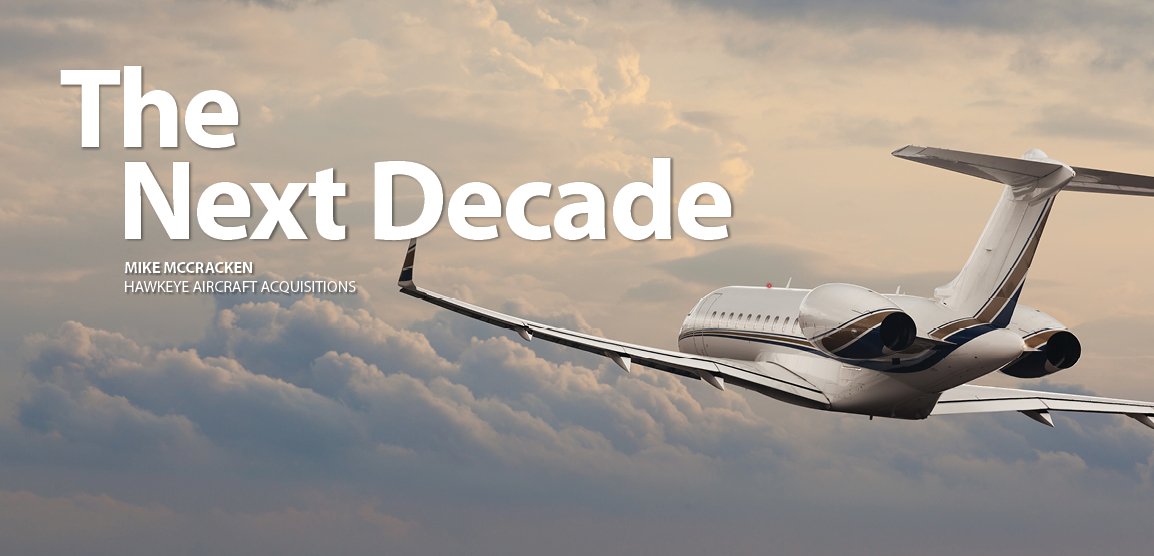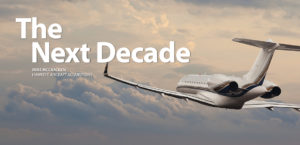As published in BusinessAir Magazine issue #4
We are starting to enter an aircraft market that we have not seen in almost a decade. Certain models are starting to become scarce.
After nearly 10 years of plentiful inventory and many very good choices, the market is becoming limited. We have seen absorption rates (the amount of inventory that is available divided by the pace of sales equals the months of inventory which is the absorption rate) come down from the high 20’s to mid 30’s down into normal territory of between 12 and 18 months. Several popular brands are below 12, which indicates a tight market.
We believe that absorption rates are a better indicator of market strength than just using the percentage of the fleet for sale. You can have a high percentage of the fleet for sale and still have a very active market, and conversely you can have a low percentage of the fleet for sale and have a very slow market.
What we haven’t seen much of yet is an upward tick in pricing. However, if an aircraft is selling for close to the same price today as a year ago adjusted for maintenance, it really has increased in value. The notion that aircraft do not depreciate is mistaken. All things mechanical have life limits and they do depreciate in real terms.
So what does this mean for the readers of this magazine?
For buyers, if you have a reason to upgrade planes when you see an opportunity that meets your requirements, you will need to take action. The days of that same plane being on the market 6-9 months later is becoming less and less a possibility. You still have negotiating power, however understanding that when it comes to a pre owned aircraft, they can be as individual as snowflakes and it you find the right snowflake it might be months before another one comes along. My advice, make sure you have the right acquisition person on your side to determine the value given today’s market and take action.
For sellers, the demand is still not so high that you can be overpriced, so you need to make sure you are properly priced for the market. But, while you will still get the low ball offers you can choose to pick a deal that is at the current market value and with the right terms and conditions. The reason you cannot afford to get overly selective and too high on price right now is that in every model group there are competing models available. So while there might only be one or two comparative models to yours on the market, there might be another one from a different manufacturer that does the same or nearly the same thing. Unless a buyer is adamant about your make and model, they will not pay in excess to just have yours.
From a historic point of view we also have seen that buyers will get a little less picky on total time and maintenance status to off set paying too much for a pristine aircraft. This is hard to predict the timing, but calculating value based on higher time and maintenance status can mean relative bargains for aircraft buyers and sellers will be wise to take that into account.
For the sellers that want to wait to see a meaningful price increase, it will take an increase in demand. All of the forecasts I have seen do not show a large uptick in demand for several years. Some in fact say we will only see a marginal amount for the foreseeable future.
If you want to wait for a higher price, the best thing you can do is not put your aircraft on the market. Over priced aircraft tend to slow the market indicators and give buyers a since of wait and see as the absorption rates climb, and the percentage of the fleet goes up. You are not doing yourself or the market any favors. By staying off the market you could have a good chance of getting more for your aircraft as the market will look tighter and have less overpriced inventory.
The next couple of years are going to be very interesting. To avoid costly mistakes, whether buying or selling, it is even more important to make sure you assemble the right team.
Mike McCracken
President
Hawkeye Aircraft Acquisitions






